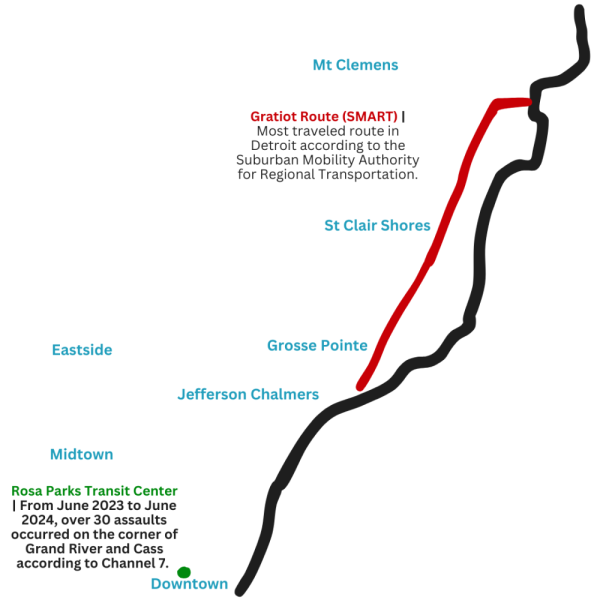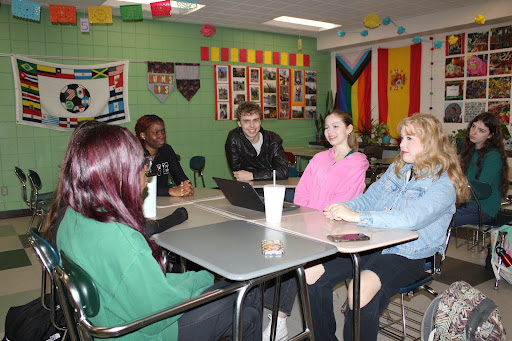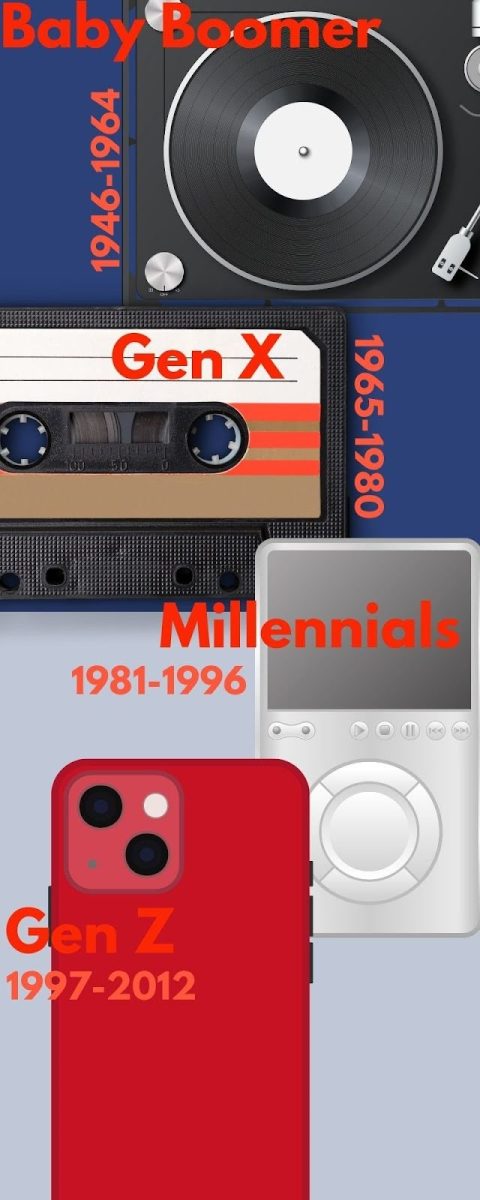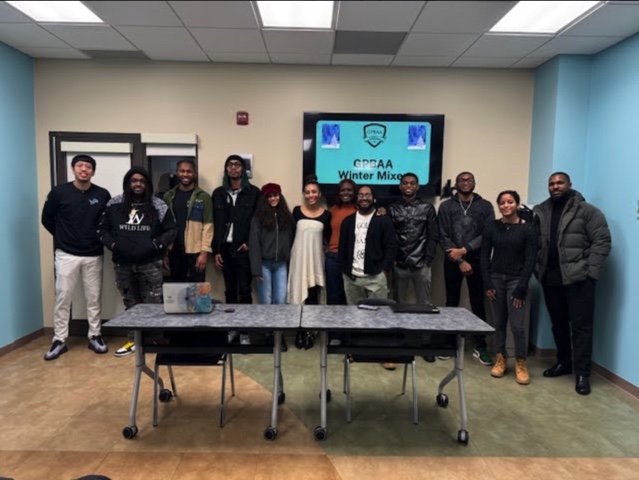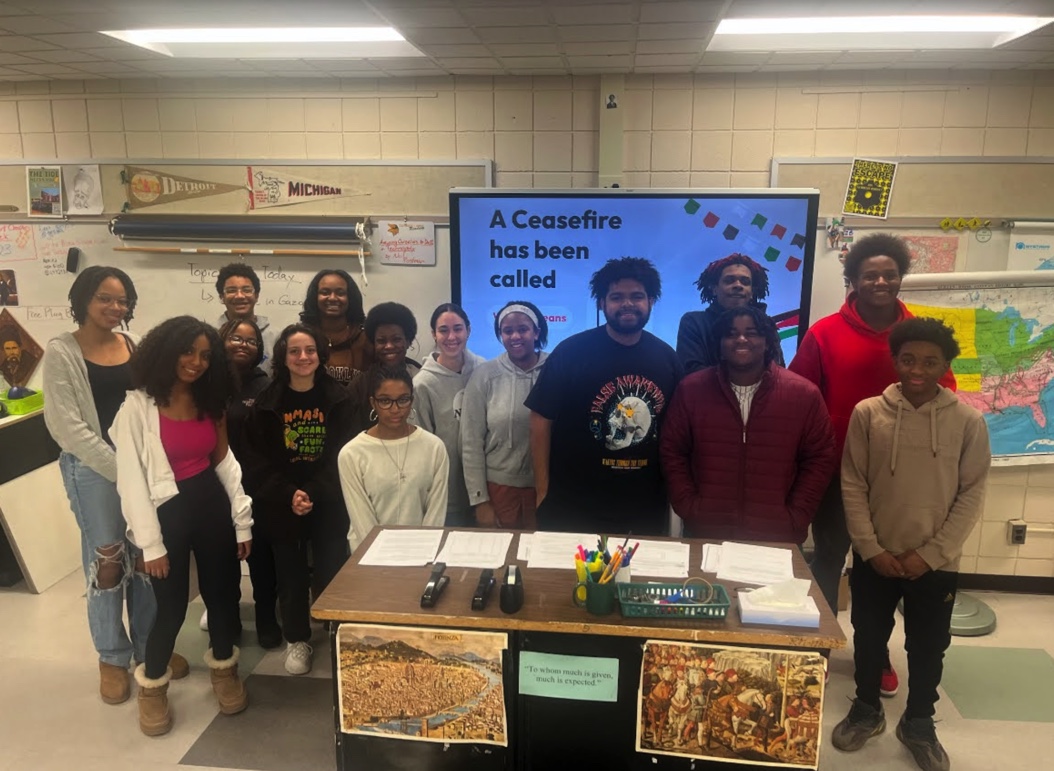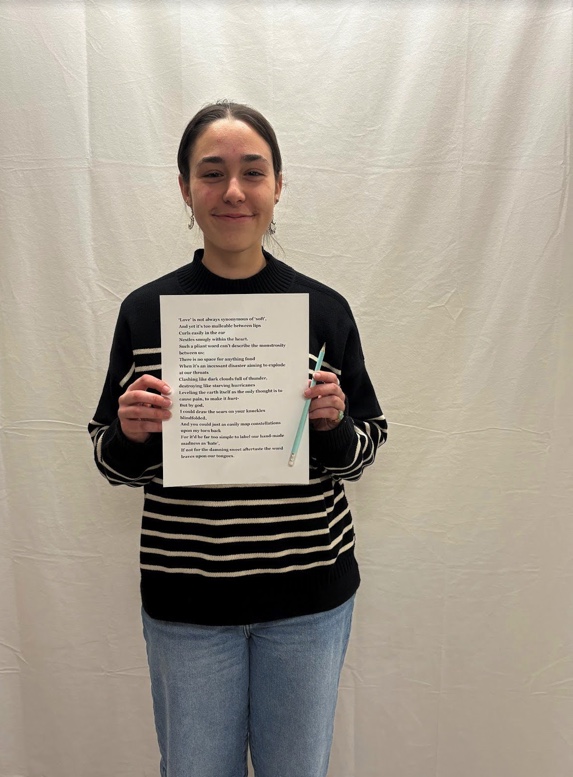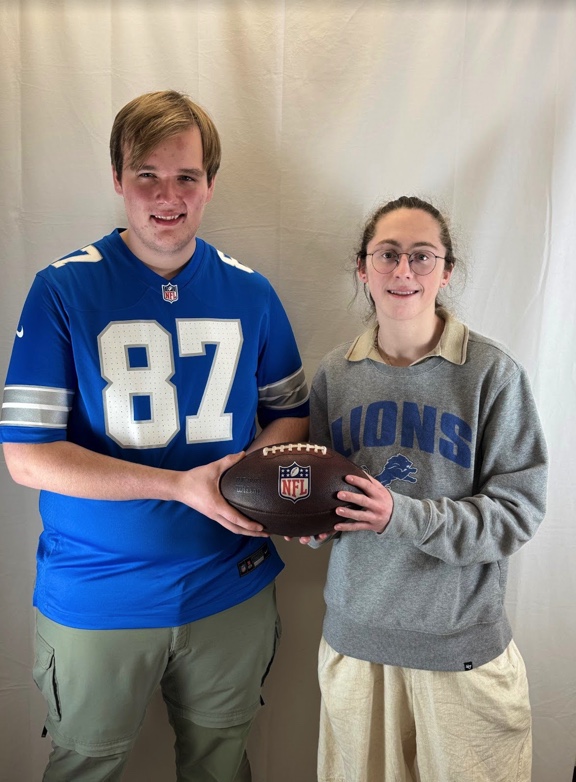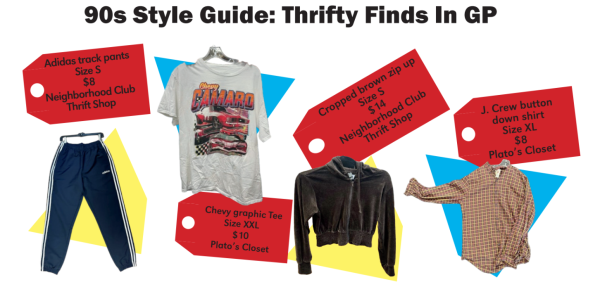
From zig-zag headbands to wide-leg jeans, the 90s are back—but this time, they’re filtered through TikTok and Instagram. As microtrends sweep through social media faster than ever, students today are now circling back and adding their own touch to the fashion of previous generations.
Two individuals who experienced these 90s trends firsthand are math teachers Erica Thacker and Robert English. Growing up in the late 90s, Thacker recalls many of the 90s and early 2000s styles that are resurfacing today.
“I think the things that stuck out the most were white eyeshadow and or white eyeliner,” Thacker said. “Also, blue eyeshadow was still a thing. Glitter on our eyes. Butterfly clips, like the little tiny ones and you would pull your hair back in little pieces.”
English, however, remembers the iconic, if sometimes outlandish, brands and trends of the time—especially when it came to jeans.
“There was a brand called Z Cavaricci,” English said. “Ricci was this weird brand. I’m glad it’s not making a comeback. It would have instead of just one belt, two skinny little belts around the waist, and sometimes the fronts even had flaps on them. They were horrible-looking jeans.”
Reflecting on the 90s, Thacker recalls a time when life was defined by activity and exploration rather than the constraints of public opinion or social media.
“We were always busy,” Thacker said. “We weren’t held back by what everyone thought necessarily or thinking someone could make a post on social media. We were just out trying to do stuff all the time.”
At Second Glance thrift store, workers also notice the reemergence 90s style. Like many thrift stores, Second Glance constantly depends on their community to shape their selection, giving customers access to an ever-evolving mix of retro fashion that reflects current tastes. Among the workers at Second Glance is Class of ’23 graduate Ella McCarthy.
“Second Glance in particular relies on our consignors to bring their items to us, so it depends on if our customers are bringing that style of clothing in,” McCarthy said.
Today, students like junior Kiley Hasting and senior Chauncey Hardges are drawn to that same free-spirited energy in 90s fashion. Both have embraced vintage looks, incorporating pieces from the era into their unique styles.
Hasting believes that a big part of the trends from that time that are trending the most now are baggier clothing, specifically jeans.
“I think it fits with today’s trends a lot, especially with the baggier clothes,” Hasting said. “I usually just wear whatever’s comfortable and I just wear baggier clothes.”
While Hasting and Hardges agree that thrifting can be useful for finding 90s clothes, Hardges has another recommendation. Depop, a global fashion marketplace, is an app that is an alternative to digging through bins to find what you want.
“It’s the place if you want to get authentic pieces,” Hardges said. “You can probably find a lot of stuff and find exactly what you want.”
The rise in popularity of second-hand clothing reflects a desire for authenticity and individuality in fashion choices. For many, this trend is about more than just nostalgia, it connects to a broader movement toward sustainability and creativity in style.
“A large part of the appeal to second-hand clothing is the possibility of finding an old gem that you could repurpose,” McCarthy said. “Sure, you could always buy a 90s-style piece somewhere new, but there’s something to be said for getting a more authentic and original piece second-hand. Upcycling those timeless trends for a great price is hard to beat.”


